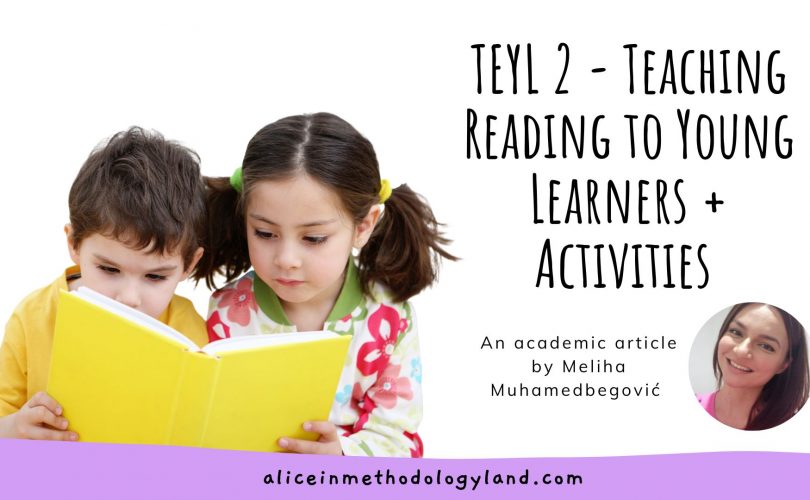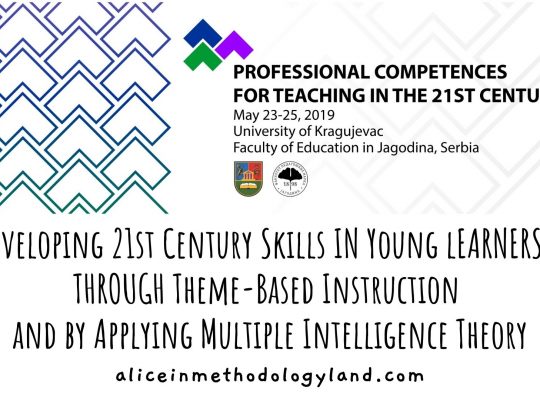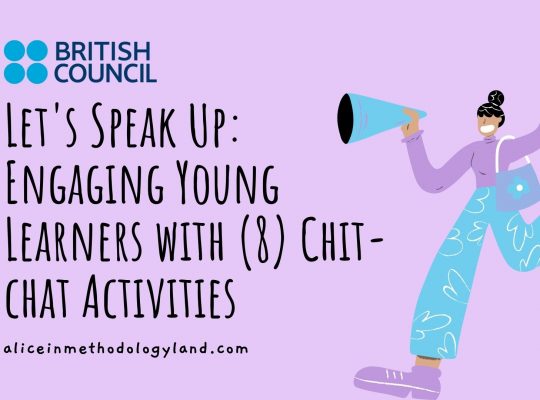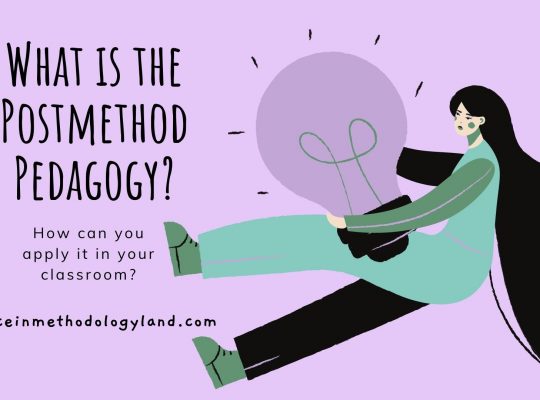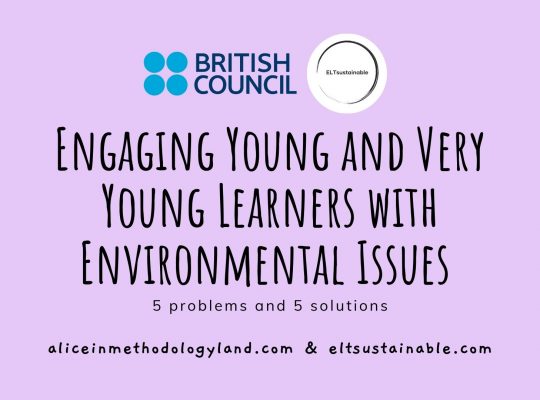Hello, my dear colleagues! We have the honor to present a new series of academic articles that will explore teaching language skills to VYLs and YLs from the theoretical perspective, while also giving practical examples at the end of each article. We hope you will enjoy Meliha’s articles.
Explore Meliha’s first article about teaching listening skills to young and very young learners below:
Let’s continue with TEYL: Teaching reading skills
We are back with another TEYL article! Today, we will discuss the most effective approach to learning reading as part of learning English. As always, we’ll start by defining what is reading and then offer tips and advice on how we can teach it to young learners successfully.
Why do we need to pay special attention to teaching reading?
As one of the crucial skills for English learners (Debat, 2006:8), teaching and learning reading is neither easy nor difficult. Reading is considered to be central to the learning process, requiring specific instructions and conscious effort (Fromkin, Rodman, and Hyams, 2007, p.522), such as being able to read complex material with a high degree of comprehension (Parkay and Stanford, 1998, p.445).
Teaching and learning reading is neither easy nor difficult.
(Debat, 2006:8)
Some problems when it comes to reading and young learners
The most common problem when teaching reading skills to YL is finding a good, effective, and useful approach due to their age and developmental characteristics. As stated in the previous article TEYL1 Teaching Listening to Young Learners, YLs are different in many ways and require different teaching approaches and methods. For instance, their mood can change too fast (Klein, 2005, p.12), they are curious and need constant teacher’s approval (Harmer, 1985; cited in Sosiowati, 2003) but they can also display a greater motivation to learn the language (Ashworth and Wakefield, 2005, p.3).
Let’s explore some approaches to teaching reading
Research has shown that there is an ongoing controversy regarding the methods of teaching reading, with many available approaches, such as the Emergent Literacy Approach, the Language Experience Approach, the Whole Words/keywords Approach, and the Phonics Approach (Cameron, 2001, pp.145-150). For some years now, the Phonics Approach and the Whole words/keywords Approach were the most successful and the most popular, however, in this article, we will explain all four approaches to find out which might be the best option for your young learners.
The Emergent Literacy Approach
The first approach describes a phenomenon in which learners learn to read without any explicit teaching, gradually, and through exposure to a text and to reading (Hall, 1987; cited in Cameron, 2001, p.145), which is known as Emergent Literacy Approach. Cameron (2001, p.146) explains that when teaching foreign language, these are some of the main features:
- Learners choose the books they want to hear and read,
- Learners are motivated by choice and by the quality of the writing they encounter,
- Learners often choose to read the same book many times, and this is a valuable learning experience,
- Meaning comes first because the child understands the story as a whole,
- Attention moves from meaning to whole words and letters, beginning with initial consonants, then final consonants, then vowels in the middle,
- The link between reading and oral skills is very strong because learners adopt and play with the language of the story.
The Language Experience Approach
The second approach, the Language Experience Approach (LEA), explains that when learners start reading at a sentence level, by using their own experience (they are already familiar with), it will help them learn to read (Hall, 1987; cited in Cameron, 2001, p.145). As learners have already “composed” a close match between their knowledge and/or experience and the text they read, a series of typical steps would follow (Ediger, 2001, pp.158-159). Let’s explore those steps:
- Learners or class dictates a “story,” usually based upon an experience they have had, that the teacher writes down on a large sheet of paper;
- The teacher then reads the story to the class (this “reading” may be repeated several times until the children are familiar with what has been written);
- Depending on their level of ability and needs, the class will engage in various extended activities based on the original story, including focusing on individual words, letters, or meanings of various parts;
- Learners are expected to move from the stories they have dictated toward being able to read those written by others.
The Whole Word Approach
Quite similar to LEA, the Whole Word/Keywords Approach, also known as the Look and Say Method, suggests that reading is not isolated skill learners learn, but rather a part of general language development, and should be learned in a natural and meaningful context (Cameron, 2001, p.148), i.e. YL tent to write short stories and learn to read from their writing (to recognize the word by memorizing it as a picture), while older learners read literature that is closely related to their everyday experiences (anticipates what is coming, and can often speed up the recognition process by guessing) (Parkay and Stanford, 1998, p.364). Cameron (2001, p.141) explains that reading aloud can motivate learners:
- Learners are expected to guess the meaning of unfamiliar words from the context or from hints,
- Learners need a lot of exposure to words orally before they read or write them,
- Listening or watching an adult read aloud, learners can see how books are handled, how texts encode words and ideas, and how words and sentences are set out on a page.
The Phonics Approach
The best and widely used method which involves teaching learners the sound-letter relationship, both in reading and writing, by sounding out or decoding new word(s), is known as the Phonics Approach (Riley, 1999, p.45). However, phonics is often taught in isolation, doing a lot of repetition, and memorizing a lot of rules with little to no personal meaning for the children (Cameron, 2001, p.149). Paul (2003, p.88) introduces a more child-centered way, so-called “active phonics”, which involves a lot of other activities (making words, noticing patterns, etc.) giving the learners confidence and an adventurous approach to reading. According to Gagen (2005), the key essence of a direct systematic phonics program is giving learners the essential confidence and foundation to try and/or read words with a positive attitude and for higher level proficient reading skills.
What is the best approach to teaching listening to young learners?
What could be the best approach to fit a teacher’s particular teaching (reading) situation, has been debated for so many years. All approaches have both advantages and disadvantages, but the approaches teachers choose to need to fit together coherently (Paul, 2003, p.2). Many studies show that it would be a mistake to rely solely on just one approach due to the fact that all learners learn in different ways and require different strategies (Paul, 2003, p.85). In addition, the best possible way would be to try to find out how to transmit the knowledge, what each learner knows,s and how he/she learns the best (Gordon Wells cited in Ashworth and Wakefield (2005, p.3)). Although, the majority claim that the Phonics Approach might be the best, the most effective, and most suitable approach to practice, Cameron (2001, p.134) claims that no “right” way of learning to read has yet been found regarding the fact what has to be learned, but that the combination of Phonics Approach and the Whole Word / Key Words Approach could be one possible way, as they complement one another and can help in building reading fluency.
Classroom techniques and activities
Having outlined different reading approaches, here are four classroom ideas that your learners will surely love! These games will help them improve their reading skills and most importantly they require few to no materials and are most effective when played in a group.
Word walls
Face-to-face classroom: If you want to expand learners’ knowledge but at the same time help them with reading, word walls could be your thing. As children are naturally curious, especially YL, walking around or looking around the classroom would be their favorite thing as they would be exposed to different words and/or images, without even realizing they’re learning. At the same time, they will reinforce their memorization and association with the object they see or have seen before.
Distance Learning classroom: Use Google Slides to create the colorful, fun, and creative Word Wall you need and use it as your background during the class.
Matching and Reading
Face-to-face classroom: As children learn concentration and discipline while reading or being read to, this game could be their favorite entertainment. Pick a book your learners are reading at the moment, select at least 7-10 words, and write or print each word on a separate card, making pairs of each word. To make it more challenging the other pair can be an image.
Shuffle them and place them facing down. You can display the cards on the board or a table. Then, take turns turning up two cards from different angles and say them out loud. If there is a match, you keep them, if not, cards are shuffled again. The game is on until all cards are matched.
Distance Learning classroom: You can find and use many online platforms, such as Gynzy or Memozor, that offer matching games, or you can search for Free Matching Slides online and adjust them to your learners’ needs and preferences.
Paired (or Partner) Reading
Face-to-face classroom: This reading-aloud activity is best used with learners who lack fluency in reading. It is pretty versatile because you can adapt this activity in different ways and still get a positive outcome, for instance, you can pair fluent readers with less fluent readers, or readers who have the same reading ability. This way learners will not only get more time to practice their reading skills, and of course get feedback or praise from their classmates which could be better for their self-esteem and confidence, but also they will bond with one another and establish their reading routine.
Distance Learning classroom: Divide your learners into separate breakout rooms, or do it together as one paired reading group, where the teacher will assign order and monitor their reading time.
Silly Voices Reading
Face-to-face classroom: one of the favorite reading activities ever is Silly Voices Reading, where learners have to read some sentences, dialogue, or words with really high-pitched or low-pitched sounds. Of course, you can set a theme, e.g. animal sounds or their own silly voice. For example, read like a baby, use a confused voice, or learners can come up with their own ideas – they always have an abundance of ideas anyway!
Distance Learning classroom: Change your voice in a fun way with Lingojam or Voice Changer. Just record your learner’s voice, choose the voice and there you go… silly reading but fun activity with happy learners.
To conclude
So there you have it – some of our favorite reading games, both for face-to-face and online teaching. Remember that the suggestions listed above are just the beginning of your teaching-reading journey. Give these games a go, and if you’ve found this useful, please let us know what your favorite way to practice reading is down in the comments!
References
- Ashworth, Mary, and H. Patricia Wakefield. (2005). “Teaching the world’s children – ESL for ages three to seven.” English Teaching Forum. Vol. 43. No. 1. Pages. 2 – 7.
- Cameron, Lynne. (2001). Teaching Languages to Young Learners. New York, NY: Cambridge University Press.
- Debat, Elba Villanueva de. (2006). “Applying current approaches to the teaching of reading.” English Teaching Forum. Vol. 44. No. 1. pages. 8 – 15.
- Ediger, Anne. (2001). Teaching children literacy skills in a second language. Marianne CelceMurcia (Ed) Teaching English as JELE JOURNAL OF ENGLISH LITERACY EDUCATION, VOL. 3, NO. 1, MAY. 2016 88 a Second or Foreign Language. 3rd Ed.. Pages. 153 – 169. Boston, MA: Heinle & Heinle.
- Fromkin, Victoria, Robert Rodman, and Nina Hyams. (2007). An Introduction to Language, 8th Ed.. Boston, MA: Thomson Wadsworth.
- Gagen, Miscese R. (2005). “Direct systematic phonics is the most effective way to teach children to read – Just the facts!” Right Track Reading Lesson.
- Gagen, Miscese R. (2005). “The equation for reading success.” Right Track Reading Lesson.
- Klein, Kerstin. (2005). “Teaching young learners.” English Teaching Forum. Vol. 43. No. 1. Pages. 12 – 17.
- Parkay, Forrest W, and Beverly Hardcastle Stanford. (1998). Becoming A Teacher, 4th Ed., Needham Heights, MA: Allyn & Bacon.
- Paul, David. (2003). Teaching English to Children in Asia. Hong Kong: Pearson Education Asia Ltd.
- Riley, Jeni. (1999). Teaching Reading: at Key Stage 1 and Before. Cheltenham, Cloucertershire UK: Nelson Thornes Ltd.
- Sosiowati, I Gusti Ayu Gede. (2003). The Challenge of Teaching Young Learners.
Meliha Muhamedbegović received her Bachelor of Arts (B.A) in English Language and Literature with a focus on ESL/EFL teaching from Tuzla University in 2014. She continued her education and pursued a Master’s Degree in English Linguistics from the same University, graduating in 2017. She also earned a CAE certificate from British Council in 2016.
She is also running her own TpT store, where she interacts with other teachers and/or collaborates on projects and shares writing ideas. Her articles have appeared on a number of websites, including STUDOMAT (BiH), but she also contributes articles about ESL/EFL to EFL Magazine (Japan), ELTA (Serbia), etc.
You can contact Meliha via her email [email protected] or via her LinkedIn profile.

